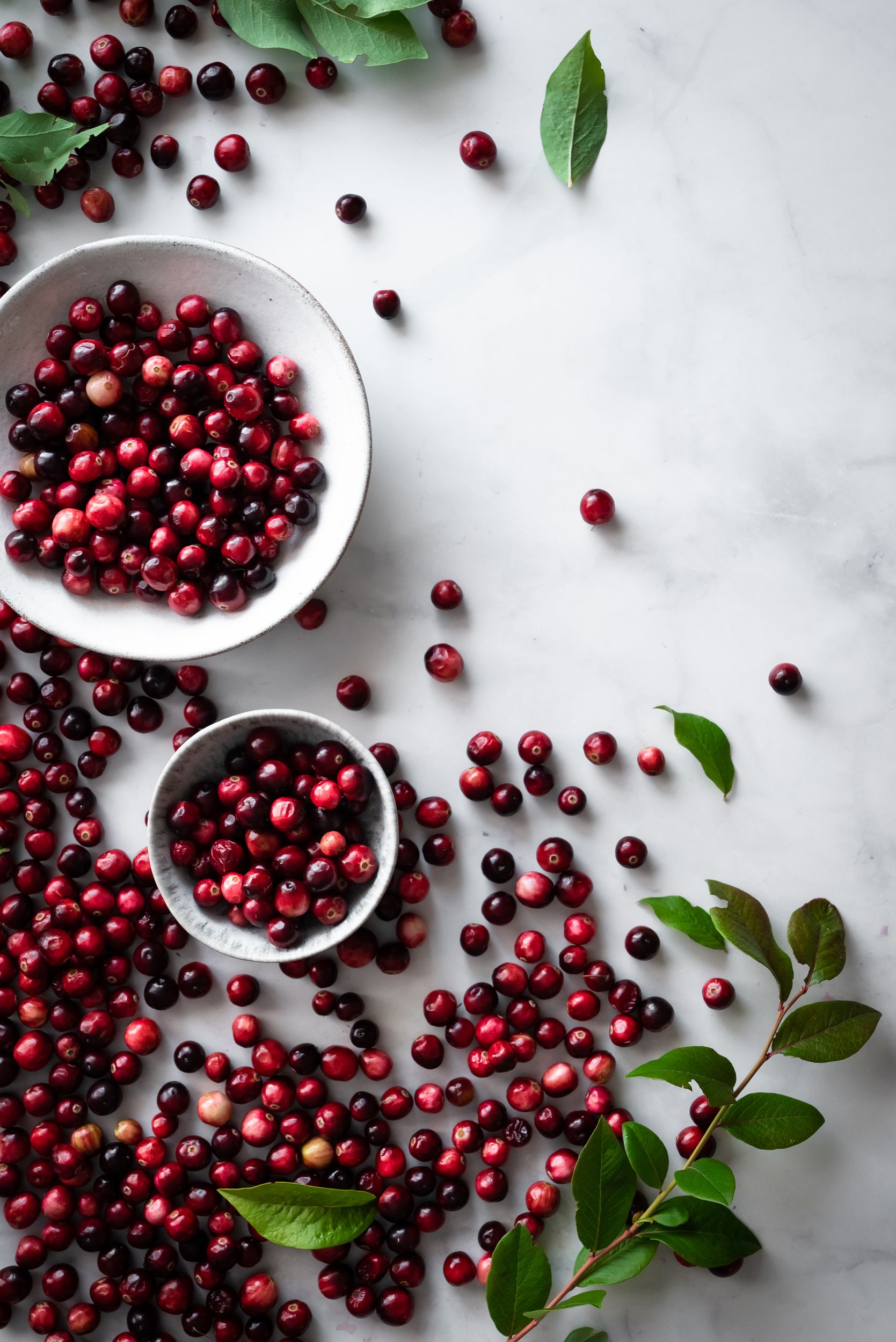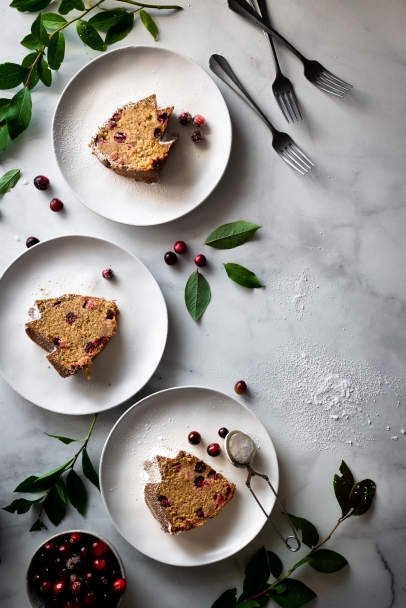Eat, Drink & Cranberry!
Winter turns me into a colour hunter. Emerald greens and shades of citrus abound, but it’s the cranberry, with its brilliant ruby hue, that always catches my eye—though I wasn’t properly acquainted with this seasonal fruit until much later in life. Coming from a Scandinavian family, cranberries don’t make an appearance on our table like they do for a vast majority of North Americans this time of year. Nevertheless, I’ve grown to love this versatile ingredient, and I put it to work all season long.
The common cranberry plant (Vaccinium macrocarpon) is native to the wetlands of central and eastern North America. Wild cranberries, or “sasemineash” as they’re known in Algonquin, were an important food, medicine and dye for Indigenous populations and a vital nutriment for early settlers and traders. The name “cranberry” is actually the modern shortened version of “crane-berry,” which likely stems from their resemblance to cranes’ bills prior to fruiting. Since cultivation began in the mid-1800s, names like Stevens, Bergman and Ben Lear have been given to some of the varieties we see today.
By the 1940s, cranberry cultivation headed northwest from Massachusetts into British Columbia, specifically the lower Fraser Valley and Vancouver Island regions. Today, several Island farms produce these beautiful fruits for the commercial co-op Ocean Spray and local consumers. British Columbia is the largest producer of cranberries in Canada, contributing 12% of the annual harvest for domestic and international distribution, with Yellow Point Cranberries in Ladysmith producing over 90,000kg of fruit annually.
In North America, cranberries are a relatively common ingredient throughout the fall and winter months, making their way into cocktails, jams, sauces, cheese, roasts, baked goods and even seasonal decor. These bright and buoyant fruits are deceptively juicy and unmistakably tart due to their natural acidity and lower sugar content. It’s not surprising, then, that the majority of cranberry products (aside from fresh) are sweetened in order to be palatable enough for consumption—they are rarely eaten raw. 
When it comes to seasonal baking, the sharp, sour taste of cranberry can be combined with complementary ingredients like spices, sugars and, most commonly, citrus. However, no matter the accompaniment, cranberries will always take centre stage. Fresh cranberries are my preference for most cake and pastry recipes, as they provide moisture, concentrated flavour and a burst of colour. Dried cranberries are better suited for recipes with an overall lower moisture content (e.g. cookies, biscotti etc.), where they won’t risk drying out the final product. However, fresh and dried can be used interchangeably in some cases with minor adjustments to a recipe.
This time of year, fresh cranberries are widely available packaged and stored in the produce section of your local grocer or from local farms. Ideal specimens should be firm and brightly coloured with a smooth skin free of wrinkles (unless fully dried, that is). Cranberries are surprisingly expensive in other parts of the world, so consider yourself lucky to have access to an abundance of fresh or frozen varieties from Island growers.
Stored in the crisper, fresh cranberries will last three to four weeks, or frozen for up to one year. They are an excellent source of vitamin C, and their brightly coloured skins contain numerous flavonoid polyphenols and other antioxidants. Cranberries are a nutritious, captivating and versatile seasonal fruit worth celebrating this time of year!






